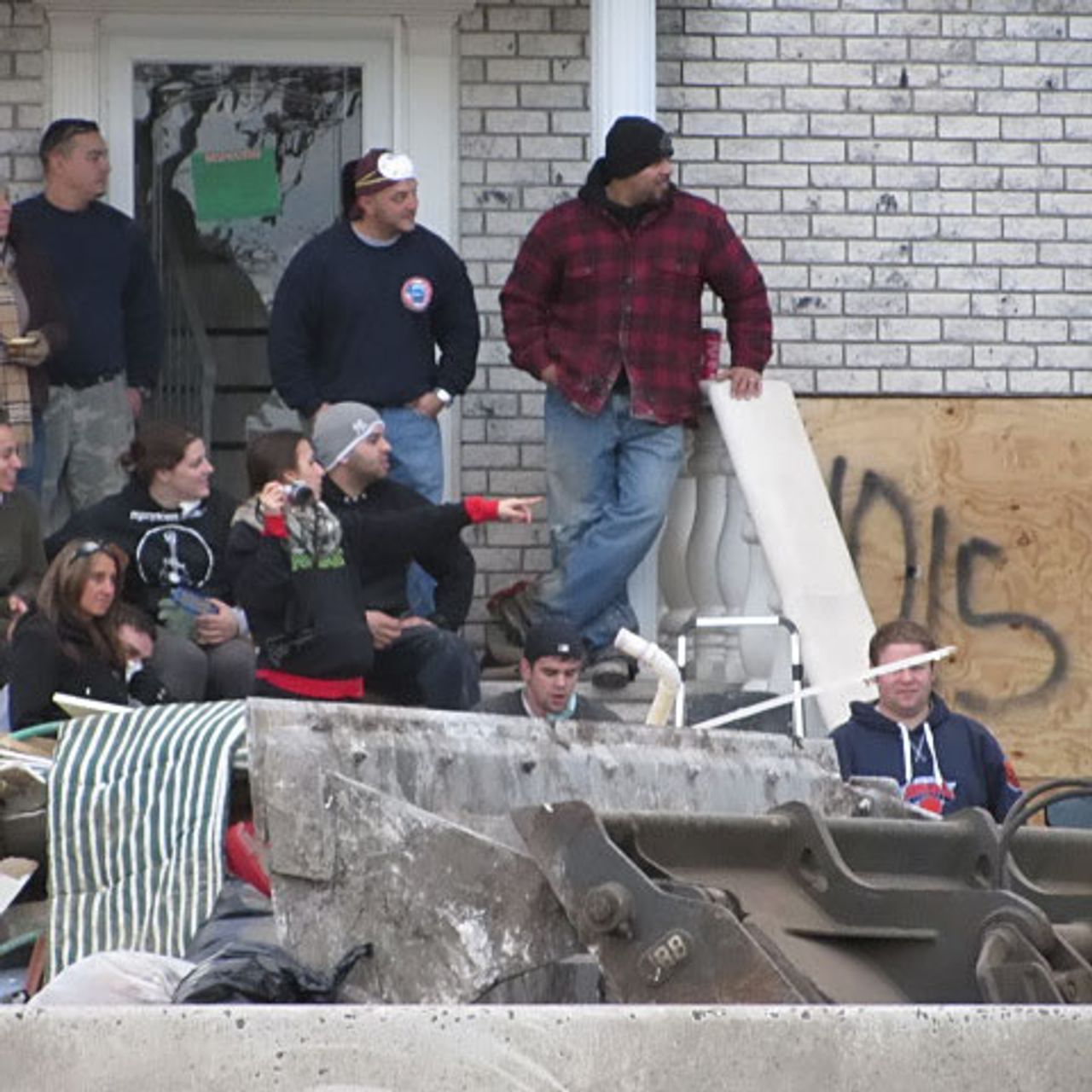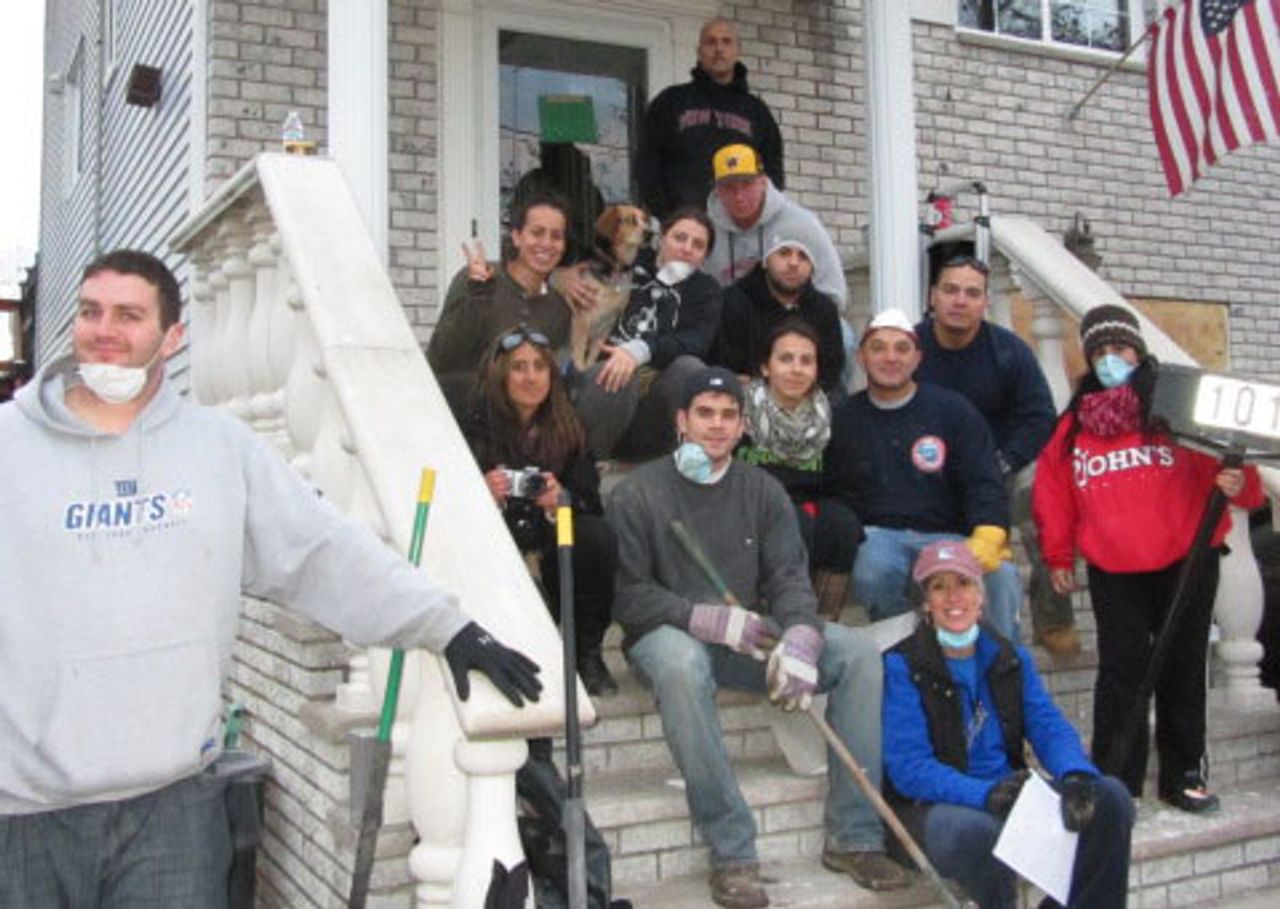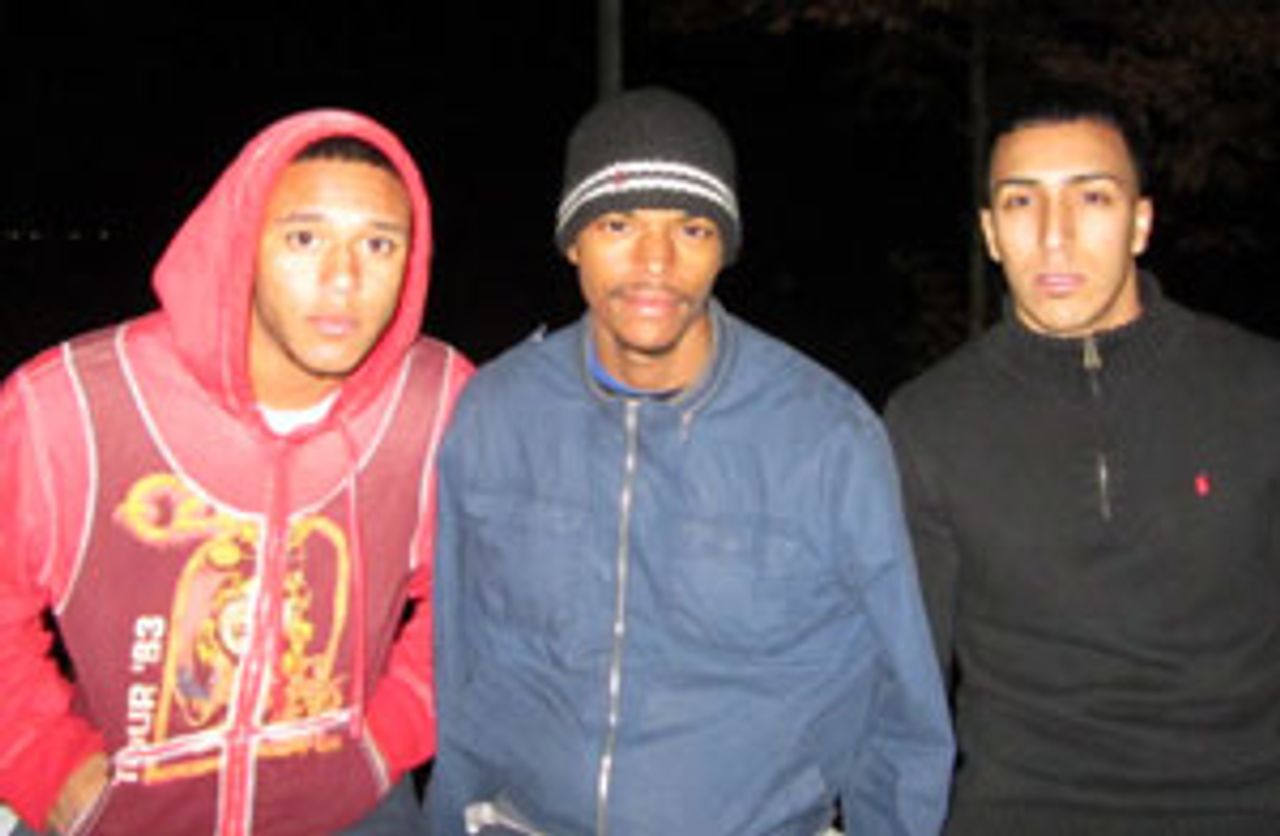 Flood victims on steps where earth mover is clearing debris
Flood victims on steps where earth mover is clearing debrisNew York’s borough of Staten Island suffered some of the city’s worst destruction and its highest death toll from Hurricane Sandy. Now, a week later, many of its residents feel that they have been abandoned as unlimited resources are lavished on restoring Wall Street and the more upper-class areas of Manhattan.
In the absence of adequate aid from the federal, state and city governments, residents of the island borough have banded together to help each other, with many having seen their homes destroyed or flooded, with their furniture piled high in the street for disposal.
 Omar Reyes
Omar ReyesWorld Socialist Web Site reporters spoke to Omar Reyes, a resident of the Rosebank section of Staten Island. “The electricity came back on for me on Friday,” he said, “but the house behind us doesn’t have electricity yet. They must be on a different grid. We are helping them out. We threw them a wire. Fortunately, our boiler didn’t go out for some reason, and we have hot water. However, a lot of people around us do not have hot water.
“After a few days, we drove around. South Beach and Midland Beach were the worst hit. People are helping each other in these areas. Gas is a major issue. I waited in line for five hours to get gas. Today the gas line was past where I had started in line. I’m sure people spent the night there in their cars.”
The gas line for that station stretched for two miles on Saturday, down to the Verrazano Bridge where the New York Marathon had been scheduled to start, before Mayor Michael Bloomberg was forced to cancel it in the face of public outrage over the diversion of needed resources to run a race.
Down on the shoreline of the Midland Beach area, a group of about 10 people were sitting on the steps of a house on Fr. Capodanno Boulevard watching an earthmover scoop up the remains of furniture and other destroyed belongings from their homes.
 Pat Larkin, in gray sweater, and Alexis, in middle with scarf, with family and friends on front step
Pat Larkin, in gray sweater, and Alexis, in middle with scarf, with family and friends on front stepAlexis, a young woman who had lived in the house for 22 years, pointed to the six-foot fence connected to her neighbor’s home. “The water came up over the top of our car, to about five-and-a-half feet here. It did not go above that fence or over these steps. But the area behind us slopes down like a bowl. It goes back about 10 to 15 blocks.
“They built a lot of subprime housing there with inadequate drainage. We would tell prospective buyers to come back after it rains because water would be leaking into the house. The bowl area was lower, like in Katrina, and it filled up with 15 feet of water.
“People had to climb to the highest point they could find to escape the water. They had to scramble to the rooves of their sheds and spend the night there surrounded with water. Many people had to climb onto their neighbor’s shed roof and hold on there. Our next-door neighbor had to climb out of his house, and he spent the night on our back deck.
“We were having dinner at our neighbor’s on the corner when the water started to rise at 5 pm. By 7:30, the water was too high. We couldn’t go back, so we spent the night there. The water came in slowly at first. It came all the way across that field to the curb. Then in 30 minutes, from the time the water first reached the curb, it was near the top of our steps. There were no waves. The water came in like a river.”
Alexis described her family’s economic situation before Hurricane Sandy, “I have been laid off, and my mom has been laid off from the same S&P 500 company,” she said. “We are on unemployment. Maybe it will be extended. We don’t have any health insurance because I, my parents and my grandparents all don’t qualify.”
With temperatures falling, she explained: “We have no heat, and it is freezing. You can’t even wash dishes because the water is so cold.”
Her father added, “Unfortunately, we are a low-income community. We only got help after a lot of people died here, and people started yelling about it. Only then did we get help.”
Pat Larkin, a young resident of Staten Island who works for the College Bound program, was doing volunteer work around Alexis’s house. He said he was skeptical about the official death toll of 20 on Staten Island. “I have people tell me that the official death toll is an artificial number. They say really more people have died, but FEMA or the city or whoever is trying to cover things up and not make things look so bad. It is a reasonable view. There are a lot of people who are senior citizens here, and we don’t know who else has been killed.
“I came down here Monday at 5 pm to check out the beach. When I came back on Thursday, I couldn’t believe the destruction. There were cars sitting on top of brick walls. Vehicles had been transported into positions you couldn’t park them in. What I saw was devastating. It was heartbreaking.
“I am from Staten Island, and it is something that people have come together like this. All I lost was power. But some of my friends lost their homes. They were in Zone A and evacuated. But when they came back their homes had been hit hard by Sandy, and they were flooded out. I work with some of them, and it is just tragic.”
Pat’s friend compared the assistance provided to the upscale sections of Manhattan to what has been done for the neighborhood on Staten Island, “The people who don’t live in the luxury apartments don’t have help. Shouldn’t they take care of the people with no protection from the water first?”
As darkness fell and one of the coldest nights of the fall began to threaten the battered population living without light or heat on Staten Island, we met a city schoolteacher and three high school-age friends who had been doing volunteer work during the day.
Stephanie, a teacher who has been at Intermediate School 24 in Staten Island for four years, said her school had to be evacuated. School is scheduled to restart in the city on Monday. “If there still is no power at my school on Monday,” she explained, “the students will need to be split up among three other schools, two of which also had to be evacuated.”
 Joseph Pinzone, Mark Mejia and Kamal Dbajat
Joseph Pinzone, Mark Mejia and Kamal DbajatJoseph Pinzone, who is working, said, “My power is out. We went to volunteer today to help anyone with anything that needed to be moved. Many people came out to help. Right here was one of the worst areas. The water just flooded up and over the field. I saw a picture from around here of a car on top of a car. I hope those people have insurance.”
Mark Mejia, a student at City School, was critical of the response to the disaster. He also doubted the official death toll for Staten Island. “There was not enough help out here,” he said. “There were a lot of people volunteering, charitable stuff going on, buses full of carriages loaded with donations, but there are few official efforts.”
At that point, their friend, Kamal Dbajat, a student at Port Richmond High School, showed a picture on his iPhone of a message written on the side of someone’s house that said, “3 days no help. Thanks Bloomberg.”
Mark commented, “We are the forgotten borough. People like me, my voice doesn’t matter. Money talks.”
